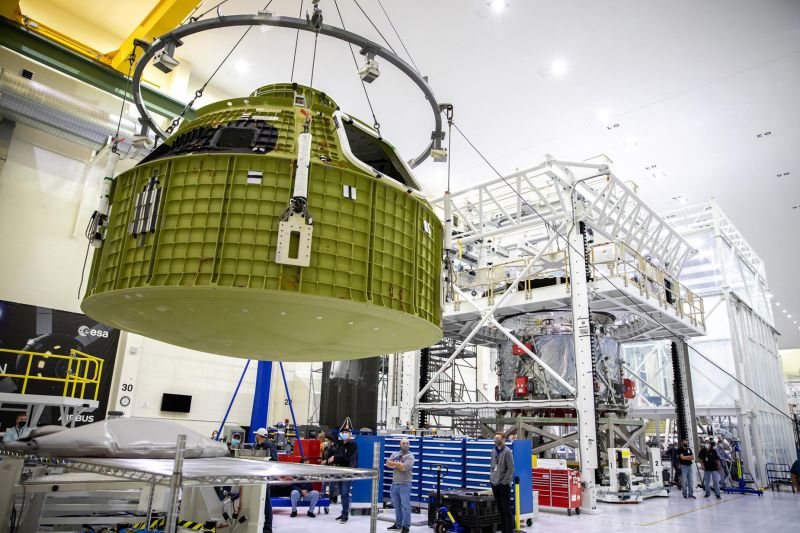
Peregrine Spacecraft's Fiery Reentry: A Setback for NASA's Lunar Ambitions

The Peregrine spacecraft, which aimed to make a moon landing in over 50 years, is expected to return to Earth after a critical fuel leak dashed its lunar ambitions. This setback for NASA's CLPS program raises questions about the future of lunar exploration.
The Failed Moon Landing Attempt
The Peregrine spacecraft, launched on the first US mission to aim for a moon landing in over 50 years, is headed back toward Earth after a critical fuel leak. This failure is a significant setback for NASA's Commercial Lunar Payload Services (CLPS) program, which aims to return humans to the moon later this decade by recruiting private companies to investigate the lunar surface.
Astronaut Edwin E. Aldrin Jr., lunar module pilot, walks on the surface of the moon near a leg of the Lunar Module during the Apollo 11 extravehicular activity (EVA). Astronaut Neil A. Armstrong, Apollo 11 commander, took this photograph with a 70mm lunar surface camera. The astronauts' bootprints are clearly visible in the foreground. While astronauts Armstrong and Aldrin descended in the Lunar Module (LM) "Eagle" to explore the Sea of Tranquility region of the moon, astronaut Michael Collins, command module pilot, remained with the Command and Service Modules (CSM) "Columbia" in lunar orbit.
Astrobotic Technology, the company that developed the Peregrine lander under a $108 million contract with NASA, revealed that it made the decision to dispose of the spacecraft by allowing it to disintegrate midair while plunging back toward Earth. The failed mission highlights the challenges of lunar exploration and the risks associated with private-public partnerships in space exploration.
(1/4) We've received the first image from Peregrine in space! The camera utilized is mounted atop a payload deck and shows Multi-Layer Insulation (MLI) in the foreground.
Weighing Disposal Options
Astrobotic had several options for disposing of the Peregrine lander, including leaving it to the cosmos or allowing it to crash-land on the moon. However, the company decided to bring the spacecraft back to Earth to avoid the risk of it becoming uncontrolled garbage in space. The decision to dispose of the spacecraft raises questions about responsible space debris management and the long-term impact of failed space missions.
The Orion pressure vessel for NASAâs Artemis III mission is lifted by crane for its move onto a work stand in the high bay of the Neil A. Armstrong Operations and Checkout Building at NASAâs Kennedy Space Center in Florida on Oct. 20, 2021. The pressure vessel will be secured onto the work stand where Lockheed Matin technicians will begin the work to prepare the spacecraft for its launch atop a Space Launch System rocket. Artemis III will send astronauts, including the first woman and first person of color, on a mission to the surface of the Moon by 2024.Date Created:2021-10-21
The impending demise of the Peregrine vehicle highlights the challenges of managing space debris and the ethical considerations of disposing of failed spacecraft.
Critical Errors and Accomplishments
The Peregrine spacecraft faced critical errors, including a fuel leak that prevented it from completing its planned mission to land on the lunar surface. Despite the challenges, the spacecraft was able to gather valuable data and operate some science instruments, providing insights into radiation levels in space and precision navigation techniques. However, the failure of the mission resulted in the loss of scientific payloads and mementos that were intended for lunar exploration.
















